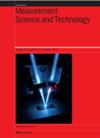Development of a vehicle–mounted soil organic matter detection system based on near–infrared spectroscopy and image information fusion
IF 3.4
3区 工程技术
Q1 ENGINEERING, MULTIDISCIPLINARY
引用次数: 0
Abstract
In the practical application of farmland, the soil organic matter prediction model es-tablished by the traditional near-infrared spectroscopy is affected by factors such as soil texture, which leads to a serious decline in the accuracy of the model. To im-prove the robustness and prediction accuracy of the model, a prediction model based on near-infrared spectroscopy and image fusion is proposed. A 1D CNN organic matter prediction model (based on near-infrared spectroscopy) was established using eight characteristic wavelengths of extracted soil organic matter (932 nm, 999 nm, 1083 nm, 1191 nm, 1316 nm, 1356 nm, 1583 nm, and 1626 nm) as spectral infor-mation. A 2D CNN organic matter prediction model was established using soil RGB images as information. Based on the idea of model weight fusion, 1D CNN and 2D CNN models are fused. When using small convolutional kernels(3-layer convolu-tional kernel size: 3 * 3, 1 * 1, 1 * 1)and 1D-CNN: 2D-CNN = 6:4, the model has the highest prediction accuracy(R2=0.872). The optimal fusion model was embedded into the inspection system. The final laboratory and field testing results are as fol-lows: under laboratory conditions, the detection accuracy R2 of the 1D CNN predic-tion model, 2D CNN prediction model, and fusion model are 0.838, 0.781, and 0.869, respectively. The RMSE is 3.005, 3.546, and 2.678, respectively. The above experi-mental data indicates that the R2 of the fused model is more accurate compared to the model established with a single information. In the field test, the R2 detection accuracy of 1D CNN prediction model, 2D CNN prediction model and fusion model is 0.809, 0.731 and 0.835, respectively. The root mean square errors are 3.466, 3.828 and 2.973, respectively. The results show that this testing system can meet the needs of soil nutrient testing in farmland and provide guidance for precision agriculture management.开发基于近红外光谱和图像信息融合的车载土壤有机物检测系统
在农田实际应用中,传统的近红外光谱法建立的土壤有机质预测模型受到土壤质地等因素的影响,导致模型精度严重下降。为了验证该模型的鲁棒性和预测精度,提出了一种基于近红外光谱和图像融合的预测模型。以提取的土壤有机质的八个特征波长(932 nm、999 nm、1083 nm、1191 nm、1316 nm、1356 nm、1583 nm 和 1626 nm)为光谱信息,建立了一维 CNN 有机质预测模型(基于近红外光谱)。以土壤 RGB 图像为信息,建立了二维 CNN 有机质预测模型。基于模型权重融合的思想,将一维 CNN 模型和二维 CNN 模型进行融合。当使用小卷积核(3 层卷积核大小:3 * 3, 1 * 1, 1 * 1)和一维 CNN 时,二维 CNN = 6:1:22D-CNN = 6:4 时,模型的预测准确率最高(R2=0.872)。最佳融合模型被嵌入到检测系统中。最终的实验室和现场测试结果如下:在实验室条件下,一维 CNN 预测模型、二维 CNN 预测模型和融合模型的检测精度 R2 分别为 0.838、0.781 和 0.869。RMSE 分别为 3.005、3.546 和 2.678。上述实验数据表明,与单一信息建立的模型相比,融合模型的 R2 更为精确。在现场测试中,一维 CNN 预测模型、二维 CNN 预测模型和融合模型的 R2 检测精度分别为 0.809、0.731 和 0.835。均方根误差分别为 3.466、3.828 和 2.973。结果表明,该检测系统可以满足农田土壤养分检测的需求,为精准农业管理提供指导。
本文章由计算机程序翻译,如有差异,请以英文原文为准。
求助全文
约1分钟内获得全文
求助全文
来源期刊

Measurement Science and Technology
工程技术-工程:综合
CiteScore
4.30
自引率
16.70%
发文量
656
审稿时长
4.9 months
期刊介绍:
Measurement Science and Technology publishes articles on new measurement techniques and associated instrumentation. Papers that describe experiments must represent an advance in measurement science or measurement technique rather than the application of established experimental technique. Bearing in mind the multidisciplinary nature of the journal, authors must provide an introduction to their work that makes clear the novelty, significance, broader relevance of their work in a measurement context and relevance to the readership of Measurement Science and Technology. All submitted articles should contain consideration of the uncertainty, precision and/or accuracy of the measurements presented.
Subject coverage includes the theory, practice and application of measurement in physics, chemistry, engineering and the environmental and life sciences from inception to commercial exploitation. Publications in the journal should emphasize the novelty of reported methods, characterize them and demonstrate their performance using examples or applications.
 求助内容:
求助内容: 应助结果提醒方式:
应助结果提醒方式:


